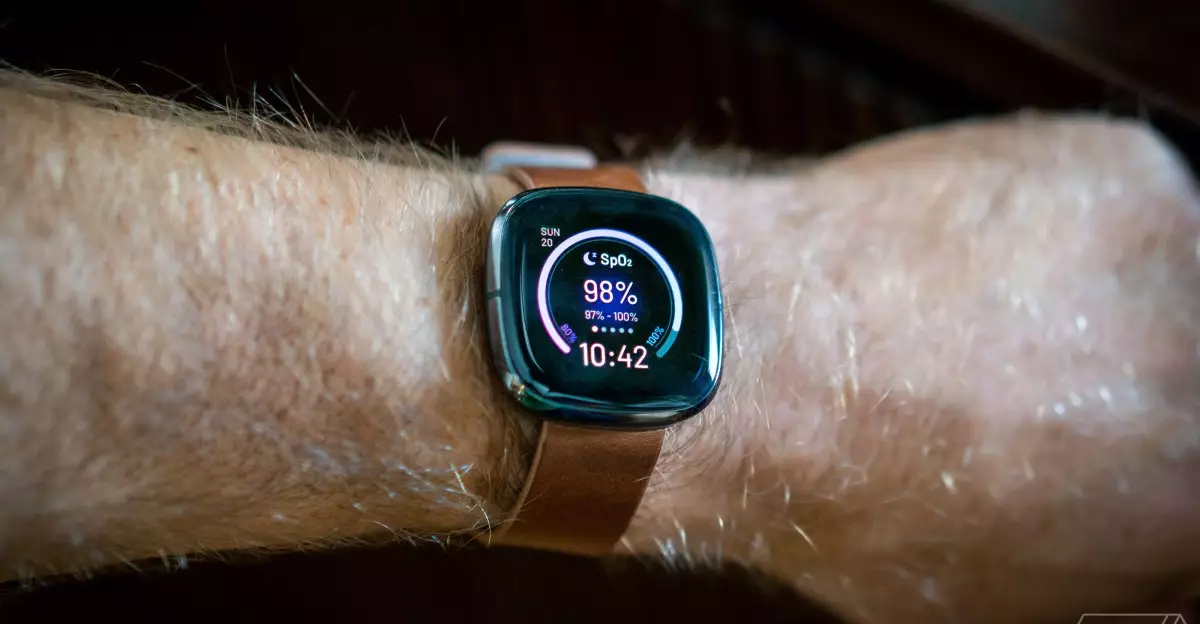In an age where tech reliability plays a pivotal role in consumer satisfaction, Fitbit’s recent firmware update for the Versa 3 and Sense smartwatches has triggered an uproar among users. The mandatory update, aimed at addressing significant overheating issues related to battery performance, has seemingly done more harm than good, leading to reports of drastically diminished battery life. This article delves into the implications of this update, examining the landscape of consumer trust, the repercussions of hardware malfunctions, and the broader ramifications for Fitbit and its owner, Google.
Last month, Fitbit users received notifications heralding a mandatory firmware update designed to mitigate overheating risks associated with their devices. According to Google—Fitbit’s parent company—this update was critical for ensuring user safety. Yet, the consumer advisory included a stark caveat: the update would “reduce battery capacity,” a revelation that immediately raised eyebrows. Users who complied with the update did not just experience mild inconveniences; they reported drastic declines in battery longevity, with some watches now barely making it through an entire day on a single charge.
Such a decline directly contrasts with the very reason many consumers opted for Fitbit devices. These smartwatches were lauded for their extended battery life, often lasting several days—a clear competitive advantage over other brands. Consumers do not simply want devices that avoid overheating; they expect a reliable, consistent performance that aligns with advertised features. The dramatic turn of events, in this case, leaves many questioning Fitbit’s commitment to quality and consumer satisfaction.
User Reactions: Frustration and Disappointment
The backlash from users has been swift and vocal. Across forums and social media platforms, users lament how their once dependable fitness trackers are now essentially rendered unusable. The transition from a multi-day battery life to devices requiring daily charges has understandably fueled discontent. Moreover, the $50 credit offered by Google to affected users—seen by some as a paltry consolation prize—has only deepened the sense of betrayal among loyal customers.
Many claim that the inconvenience of frequent charging negates the usability of their devices, rendering them impractical for individuals reliant on fitness tracking during long periods away from home. A smartwatch that cannot keep up with the active lifestyle anticipated by its users causes frustration, especially when recalled experiences of overheated devices are brought into the mix.
Legal Troubles and Historical Patterns
To compound the situation, Fitbit’s history with battery-related issues is not new. The brand faced significant legal challenges when its Ionic watches caused overheating incidents that led to injuries. A recent lawsuit from 2022 highlighted that issues with overheating might extend beyond the Ionic series, insinuating that devices like the Versa 2 and Versa Lite also suffered from similar defects. This problem has created an almost alarming air of unpredictability around usage safety for Fitbit users.
Fitbit is already under scrutiny from multiple angles, with reported incidents including burns and injuries attributed to its devices. In light of these concerns, the recent firmware update feels like a reactive measure rather than a preemptive solution, adding to the skepticism surrounding the company’s decision-making process.
In the wake of this latest firmware debacle, the question remains whether Fitbit can recover the consumer trust it has gradually eroded. This incident illustrates a critical gap in communication and customer service, two areas where the brand has faced criticism in the past. Literature on consumer electronics suggests that transparency and accountability often play defining roles in maintaining loyalty, especially in the tech industry.
As users take to social media and forums to share their experiences, it is essential for Fitbit and Google to address these grievances openly and proactively. The longer the company takes to rectify the issues or offer meaningful compensation, the more it risks further tarnishing its reputation.
Ultimately, the situation with Fitbit’s Versa 3 and Sense models serves as a significant case study on the importance of product reliability and user experience. Regular updates and software fixes should enhance user experience, not detract from it. For Fitbit, the path to recovery lies in reaffirming its commitment to safety, reliability, and consumer satisfaction—a task that will require more than just a quick fix.

